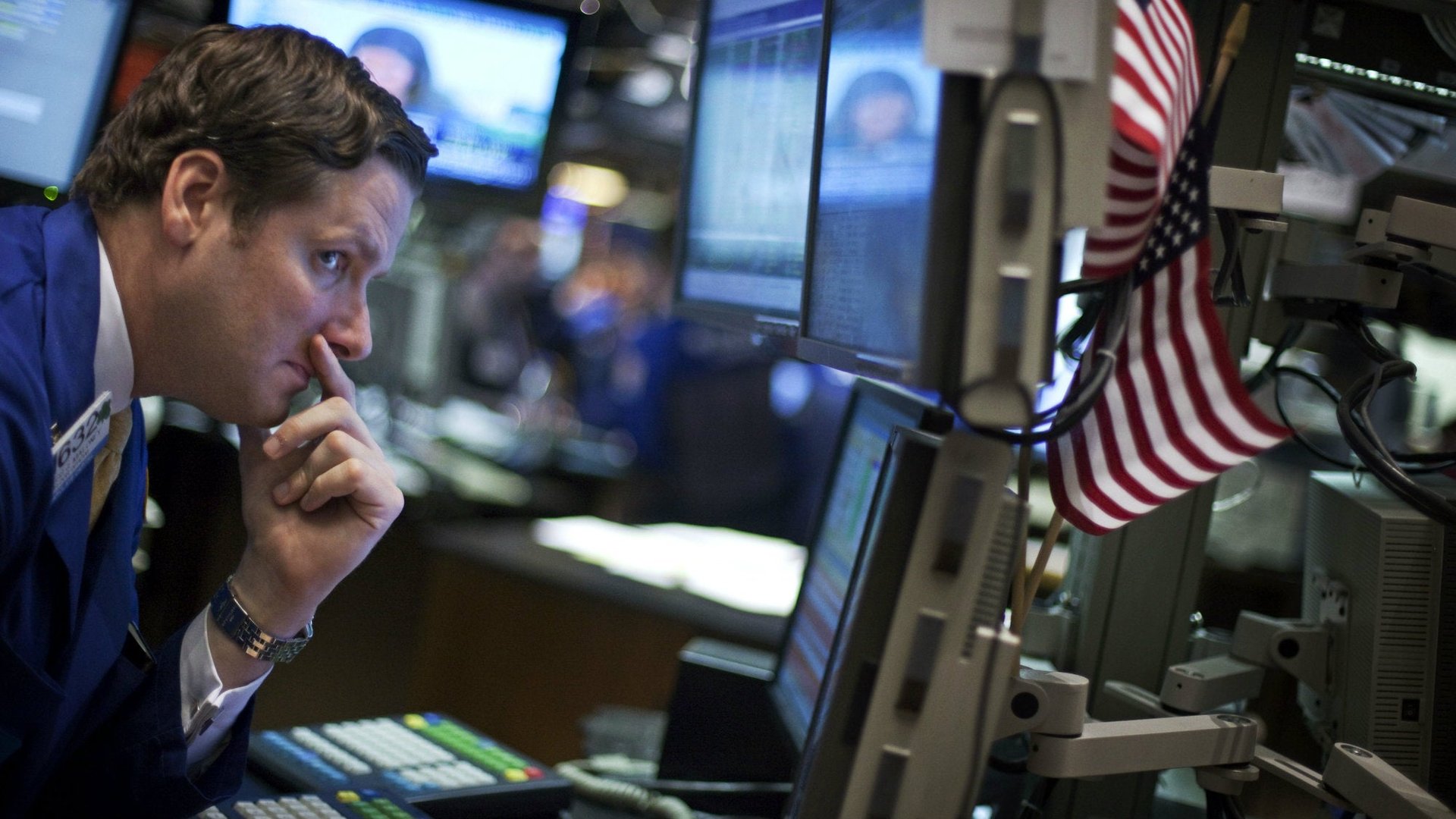Stocks may be “hideously expensive,” but that doesn’t mean a crash is coming
The US stock market is in the midst of an eight-year bull run. Over that time, stocks have more than tripled, even as analysts fret that earnings aren’t keeping pace with prices (paywall). The market is “hideously expensive,” one number cruncher says, and thinks a crash is due later this year.


The US stock market is in the midst of an eight-year bull run. Over that time, stocks have more than tripled, even as analysts fret that earnings aren’t keeping pace with prices (paywall). The market is “hideously expensive,” one number cruncher says, and thinks a crash is due later this year.
No bull market lasts forever, but how do you know if there is a dangerous bubble brewing? Even if it seems like stocks are overvalued, it’s tricky to identify when they’re so out of whack that a crash is imminent.
People worried stocks were overvalued in 1996—indeed, that’s when Alan Greenspan, then Fed chairman, famously warned about “irrational exuberance.” But if investors pulled their money out of the markets then, they would have missed out on years of gains. In fact, they would have come out ahead if they just rode out the dot-com crash—even the low in late 2002, the end of the subsequent bear market, was higher than the high set in 1996.
This is why many financial economists think that identifying stock market bubbles is impossible, at least until after they pop and you have the benefit of hindsight. Since investors would kill for accurate bubble-predicting tools, there is no lack of research on the subject.
A new paper (pdf) combed through US financial data between 1928 and 2012, identifying 40 times that stock prices in a particular industry rose by 100% or more over a two-year period. Harvard researchers Robin Greenwood, Andrei Shleifer, and Yang You found found that only about half of these runs, 21 cases, were followed by a crash, defined as at least a 40% price drop in within two years of the run-up becoming a bubble candidate. This suggests that what goes up does not necessarily come crashing down.
But if prices rise by 150% within two years, there was an 80% chance of a crash within a year. In 17 of those 21 cases, stocks dropped more than 20% in a single month during the downturn.
The study found that factors other than price, like increased volatility, firm age, trading volume, and various measures of the price-to-earnings ratio could help identify a bubble before it pops, but no system was foolproof. It’s not unusual for prices to keep rising for months, or even years, after a bubble is identified—a gain of 30%, on average. “The market can stay irrational longer than you can stay solvent,” Keynes said.
What about now? The S&P 500 is up 250% from its trough in March 2009, but the rise has been relatively steady. It took the index three years to rise by 100%, a slower run-up than the rallies identified as bubble candidates in the Harvard research.
Markets may be in for a fall, potentially a nasty one, in the future. But it is impossible to know when, and by how much. The only things that’s certain is ordinary investors who think they can time the market—instead of diversifying via index funds, and resisting the urge to trade frequently—are sure to get it wrong.